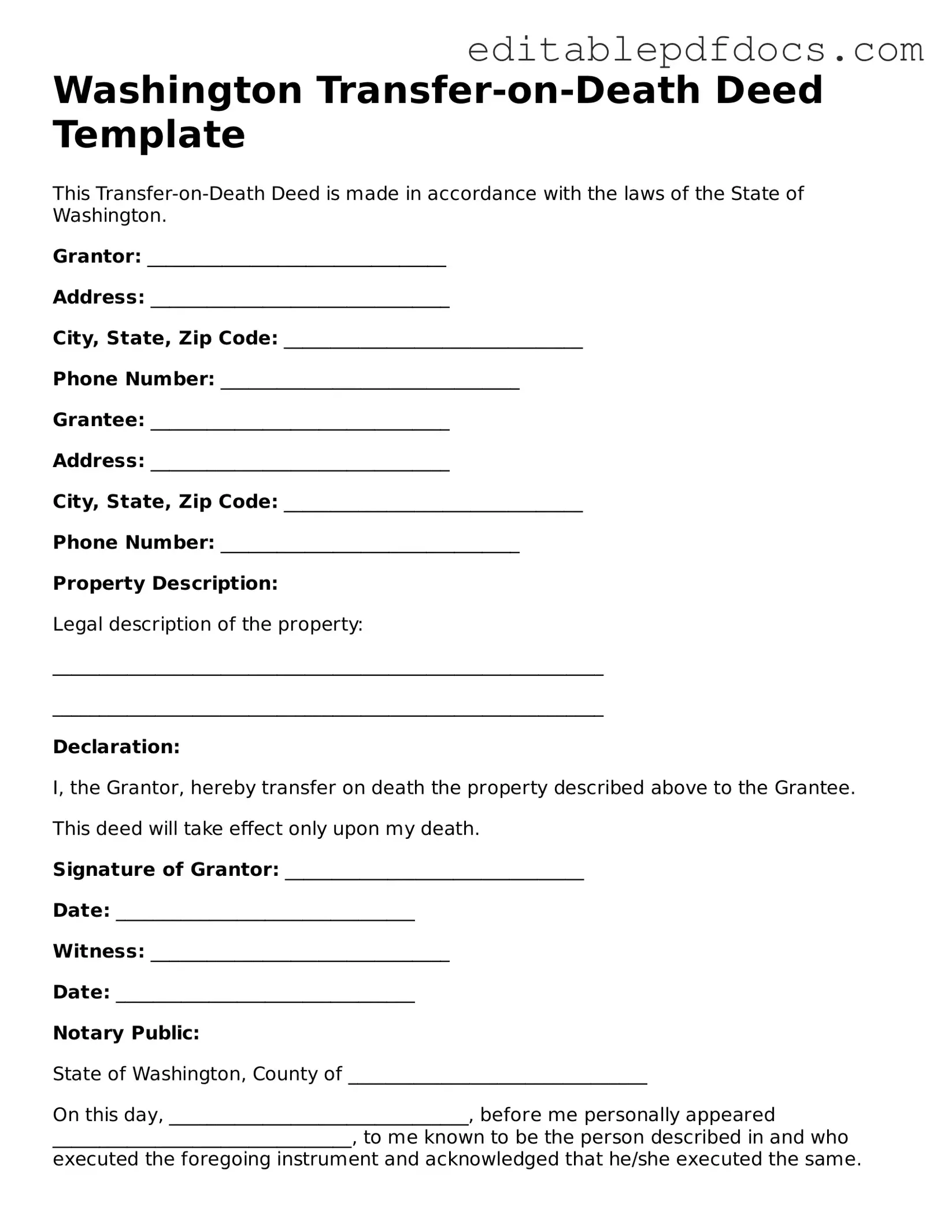Filling out the Washington Transfer-on-Death Deed form can be a straightforward process, but many people make common mistakes that can lead to complications. One frequent error is not including the full legal description of the property. This description is essential to clearly identify the property being transferred. Omitting this information can create confusion and may even invalidate the deed.
Another mistake involves failing to sign the form correctly. All parties involved must sign the deed in the presence of a notary public. If the signatures are missing or improperly executed, the deed may not be recognized. Ensuring that everyone signs in the right place is crucial for the document's validity.
People often overlook the requirement for a witness. In Washington, a Transfer-on-Death Deed must be signed by a witness who is not a beneficiary. Neglecting to have a witness present can render the deed ineffective, so it’s important to arrange for this step ahead of time.
Some individuals mistakenly assume that the Transfer-on-Death Deed automatically transfers all property rights. However, this deed only transfers ownership upon the death of the owner. Any debts or liens attached to the property will not disappear; they will still need to be addressed by the beneficiaries.
Another common issue is not recording the deed with the county auditor's office. Even if the form is filled out correctly, failing to file it can lead to problems. The transfer is not legally effective until it is recorded, so this step should not be overlooked.
People may also forget to check for any existing wills or trusts that might affect the property. If there are conflicting documents, the Transfer-on-Death Deed may not hold up in court. It’s essential to ensure that all estate planning documents are aligned to avoid disputes among heirs.
Lastly, some individuals do not keep a copy of the completed deed. After filling out and recording the form, it’s wise to retain a copy for personal records. This ensures that all parties have access to the necessary documentation when the time comes to transfer the property.
